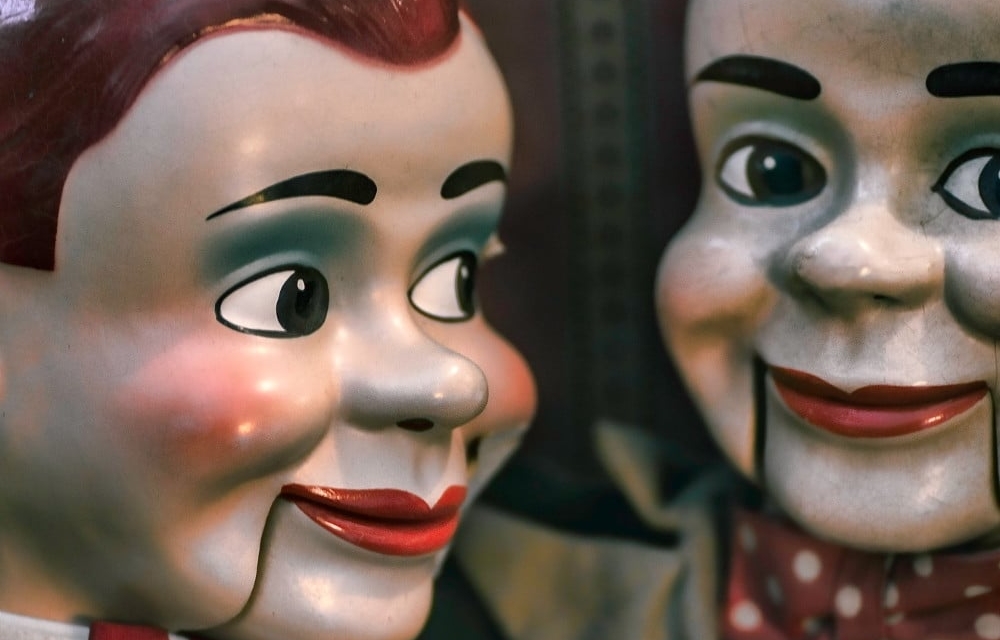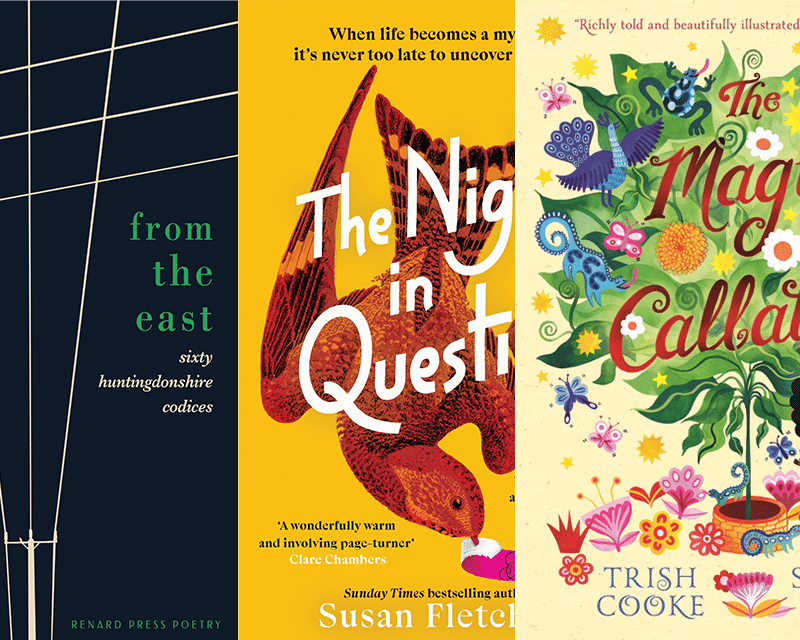- Collected
- Article
Writing Selves
Managing different creative identities

- 8 June, 2020
- Katherine Stansfield
When I took up my first university post as a lecturer in creative writing, I taught a module entitled ‘Writing Selves’. The idea behind it was that students would learn about autobiographical and biographical forms and put their learning into practice by writing in these modes themselves.
There was an irony in me teaching the module, an irony I decided not to share with my students. ‘Writing Selves’ had been created, and subsequently taught, by another member of staff who had recently left the university; the course was built from his research and expertise. He was an authority on the art of writing the self while I knew very little about it.
I didn’t know much about my own writing self at that time, either. I’d published a few poems in small magazines and was starting a teaching career feeling very underprepared. But there I was, in front of a whiteboard, thankfully clutching my predecessor’s teaching materials.
At the start of the module, I found myself comforted by his ghostly ‘self’. He haunted the weekly topics he’d laid down, the sample texts he’d selected, the writing tasks he’d crafted. Teaching his course was, initially, an act of ventriloquism on my part: I spoke his ideas, performed his knowledge, without much of my own. To use the truism learnt since from other teachers, in those first classes I was only ever a week ahead of my students as I prepped, and so I was a student myself, learning from my predecessor, without him ever uttering a word to me in person. And I did learn, and I grew more confident. By the end of term, I had banished the ghost and inhabited the module myself.
Now that a few years have passed since that stressful term of going from nought to sixty in my first proper post, I can see that such performativity was entirely fitting for a module that explored the crafting of self. As individuals, we present ourselves to others through shifting, mutable autobiography depending on the story we wish to tell, which is itself dependent on the context and the listener.
Such lessons have proved invaluable in my life as a writer. That word ‘writer’ looks, at first glance, to be singular: it is the thing I am, the thing I do. But in fact, behind that singularity are a plethora of selves. This is because, like many writers, I write in different forms. There are different versions of me, the writer, out there in the world, all writing and talking about their writing at the same time. All of them are me, numerous selves existing in the same body, writing with the same hands on the same laptop, but to my publishers and to my readers, these many selves might as well be separate people.
Some background to said selves: I started out writing poems, and I had placed quite a few in magazines by the time my first book was published. But that book was a novel – historical fiction – which I’d been writing alongside the poems. This set up a duality from the outset, which was cemented when my second book, a poetry collection, was published the following year. Was I a novelist or a poet? It depended who you asked, and it didn’t seem possible to be both things at once.
Once those two books were out, I tended to describe myself as a novelist and poet, swapping the order depending on the context. But this attempt at equality of selves was hard to maintain. I found myself described as either ‘a novelist who also writes poetry’ or ‘a poet who also writes novels’. Whichever form came second in the equation, the presence of ‘also’ made it the lesser of the two: an afterthought, undertaken for a hobby, a side-hustle. Though this hierarchy was imposed by others, rather than of my own making, it did start to have an effect.
I noticed that if I was in the ‘also writes poetry’ camp for too long, I found myself agreeing that poetry wasn’t as important to me as my fiction writing. I played down my poetry self, and I stopped looking after her. I read fewer poems, wrote fewer too. It became a self-fulfilling prophesy that poetry was a less necessary writing self.
Fortunately, I realised what was happening and had a word with myself. It was too easy to let the predilections of others dictate the time and energy I gave to different projects, which ultimately affected the value I gave them. This was particularly noticeable with poetry, because the publishing world places so little importance on that form in the first place. It’s easy to fall into the belief that poetry is a niche activity: few readers, few rewards, so why bother? Stick to the novels — that’s where the real opportunity is. That’s certainly the view of many literary agents, and who can blame them? But what if what you want to do, as a writer, is chart a course other than the dominant narrative of sales = value?
For me, the answer has been to stop paying attention to how others fix my selves, where the emphasis is placed, and to accept the fact that I can’t control this. I am resolved to ‘follow my nose’ when it comes to my writing selves and to let them have the turns in the sun they need. Different ideas need different forms, and it’s my job as a writer to find the best form to give voice to an idea, to ease its passage from the jumble of my brain to the page in a reader’s hand. This can take years and many false starts. Things that begin life as a poem might ultimately find their way into a novel, and vice versa.
These days, with five novels, two poetry collections and a pamphlet published, I tend to find the mutable hierarchy of forms created by others a fascinating and often quite funny process. I’ve realised that, because I’ve had multiple writing selves from the beginning of my career, I might as well continue in this fashion. The duality of novelist/poet, poet/novelist is now further complicated/enriched by the fact I’ve added crime fiction to the historical novels, and, latterly, fantasy.
The self of the fantasy novels has gone one step further and changed her name, because I co-write these books with my partner, David Towsey, and we publish them under D. K. Fields: a pseudonymous self that appears singular but is, in fact, a double act. D. K. Fields has problems that Katherine Stansfield doesn’t. For instance, when copies of the first book by D. K. Fields were sent to us in the post, we almost missed the delivery which raised an interesting hypothetical: if we had to go to the post office to collect the parcel, we would need ID that bears the addressee’s name. But we don’t have any such ID, because D. K. Fields doesn’t really exist, and we hadn’t thought to ask our publisher to address our book delivery to the writers who do. D. K. Fields can write a trilogy of novels, but they can’t confirm who they are to Royal Mail.
This is a challenge to the writing self I couldn’t have anticipated, but the good news is that as the selves multiply, my writing gets better, because I’m working in new forms and with new challenges. I carry with me the knowledge gained from previous projects. From the perspective of a writer, it doesn’t matter that those older forms might be very different to the things I’m working on now. I’ve stopped thinking about form as a fixed thing and learnt that some selves need a rest so that others can emerge. At the moment, I have the sketchy draft of a travel memoir last tinkered with four years ago which I hope to re-work into auto-fiction, using prose poems and flash fiction: some selves will have to collaborate for that. A space opera is a tantalising plan — something I’ve never tried before but D. K. Fields is keen.
It’s another story in the world of publishers’ sale teams, of course, who tend to prefer streamlined author ‘branding’ to help the marketing departments. I’ve accepted the fact that my many selves make for a complicated sell. I’ve amended my biography to ‘multi-genre writer’ which seems to cover my different writing identities who are hard at work now, as well as others who might still appear.
When I think back to the terrified self who taught ‘Writing Selves’ to undergraduates, daunted and full of imposter syndrome, I’m very grateful to her for rising to the challenge. That self, now a stranger in so many ways, taught my writing selves more than she could ever have imagined.
You might also like:
WritersMosaic & Jhalak launch The Review today
The first issue of The Review by WritersMosaic & Jhalak is out today. The Review is an editorially independent, 20-page…
No facts, only versions
Memoirs are as much about what is excluded as what is included. This edition examines how you can evoke the…
RLF Fellows’ News: April 2024
Publishing News RLF Fellow Trish Cooke’s new children’s book, The Magic Callaloo, is set to be published by Walker Books…


